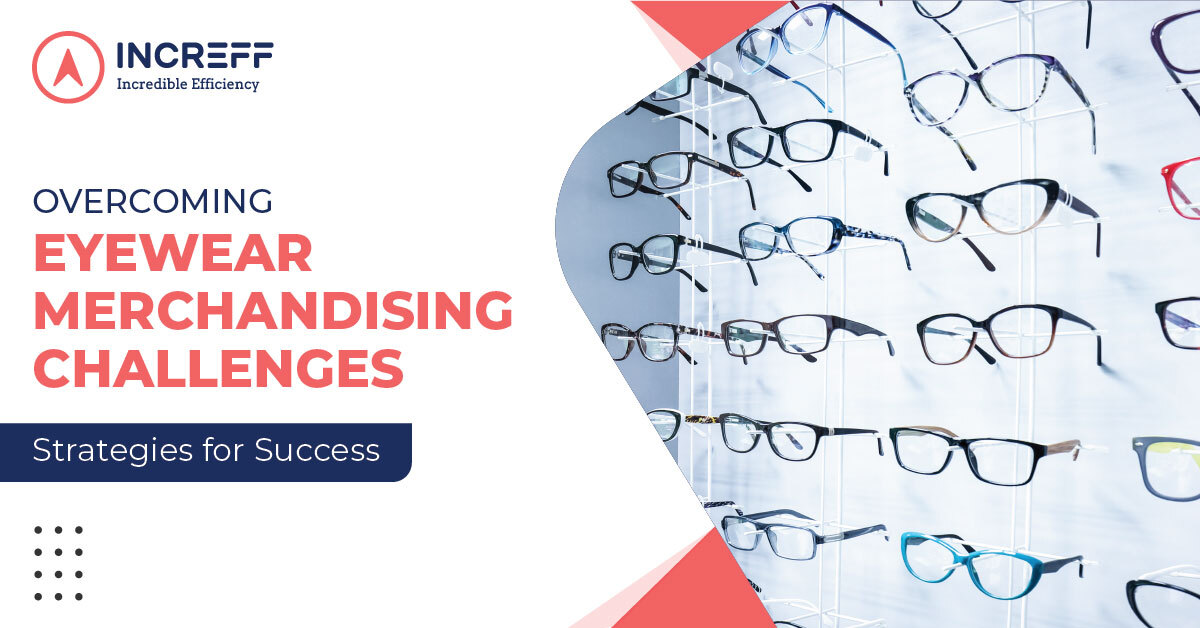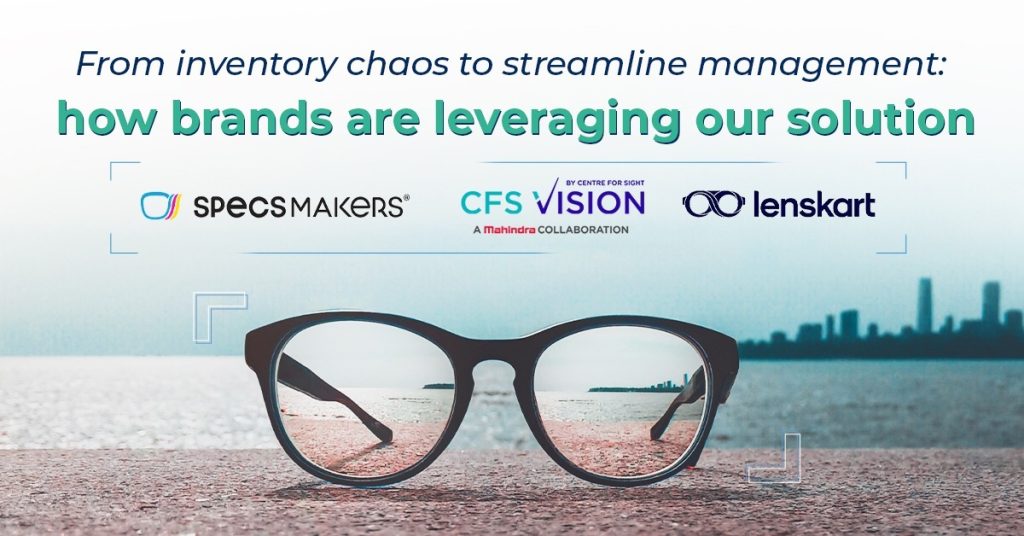
SSmart Merchandising
What are the new-age eyewear merchandising challenges and how to overcome them
Just as a pair of glasses can help you see more clearly, the proper lens on the merchandising landscape can bring clarity to the retail industry’s merchandising challenges. One significant game-changer in the eyewear sector is Warby Parker, which has revolutionized the way people buy glasses.
By offering the convenience of ordering from home and trying up to five lenses at home, they have provided customers with the freedom to explore different options. Additionally, their innovative approach allows shoppers to seek a second opinion on their eyewear choices, addressing a common need.
On the same scale of innovation, Lenskart has a 3D trial option to make shopping more convenient. They are the experts in providing seamless omnichannel, pioneers in the online retail world, and aceing manufacturing their own products. Indian eyewear market revenue is predicted to reach $5.58 billion by 2023. The market is expected to grow by 8.19% annually between 2023 and 2027, representing a compounded annual growth rate (CAGR). However, the optical industry still faces hurdles in effectively managing inventory and distribution processes.
What are the common merchandising challenges faced by the eyewear industry?
The retail eyewear industry, a hub of innovation and style, currently finds itself squinting at a daunting array of challenges. In the branded optical industry, the primary roadblock is grabbing the market share in India since the majority of the market is owned by unorganized eyewear vendors. There is extreme lead time due to the lack of manufacturers in India. Some of the other eyewear merchandising challenges are:
- Replenishing JIT styles: Replenishing Just In Time (JIT) styles in the retail optical industry is problematic mainly because of inventory management challenges and a lack of diverse geographic distribution networks. These factors make it difficult to align production and demand accurately. Hence, brands struggle to merchandise i.e., maintain a wide variety of styles and ensure timely replenishment, making it challenging to implement the JIT model in the eyewear industry.
- Replenishment of pack sizes: Ordering the wrong pack sizes can lead to excess inventory of certain styles and inadequate stock of others. Additionally, eyewear retailers often have limited shelf space and need to optimize their inventory levels to maximize display options.
Ordering pack sizes that are too large can result in overcrowded displays and hinder customer browsing. On the other hand, ordering pack sizes that are too small may lead to frequent stockouts and missed sales opportunities. Balancing replenishment with demand, available shelf space, and customer preferences is crucial for effective inventory management in the retail eyewear industry.
- Replenishment with dynamic minimum base quantity (MBQ): MBQ represents the minimum amount of inventory that needs to be maintained to ensure availability for customers. Setting the MBQ too high leads to excess inventory of specific styles, tying up capital and storage space. On the other hand, if the minimum base quantity is set too low, it can result in frequent stockouts, disappointing customers, and potentially losing sales.
Striking the right balance requires accurate demand forecasting, understanding customer preferences, and closely monitoring inventory levels. MBQ is also vital to ensure the correct mix of products is available on the shop floor.
- Challenges of style depth: With a mix of Over the counter and Just In Time models at the same stores, the precision of depth of a style at store becomes important; this often demands a close look at the demand each day and a proven forecasting model individual to each brand. Without automating the size sets and maximum stock coverage to be set for each store style, sales opportunity loss is inevitable.
- Ensuring 100% core product availability in stores: Maintaining a comprehensive inventory of core products is an essential part of merchandising. It typically includes popular frame styles and essential lens options and requires significant space and financial investment. Limited shelf space may restrict the ability to stock all core products simultaneously, leading to potential stockouts and disappointed customers.
- Identifying the most suitable replacement: Identifying and filling store gaps, as well as stockouts of specific styles at both stores and warehouses, is crucial. This involves selecting the most appropriate and unique styles that complement the existing assortment and meet customer demand. To achieve this effectively, a data-driven approach is necessary for determining the optimal size sets and maximum stock coverage. Considering the dynamic nature of the minimum base quantity (MBQ) and the inconsistent demand patterns at stores becomes essential.
- Improper identification of NOOS, top sellers, and bottom sellers: Failure to accurately identify these items can result in frequent stockouts, leading to dissatisfied customers, lost sales opportunities, and imbalanced inventory management. Inaccurate reordering decisions led by wrong identification of NOOS, leading to overstocking or understocking certain styles, can result in increased carrying costs, tied-up capital, and missed sales.
Additionally, inaccurate reporting and data analysis hinders the ability to make informed business decisions, impacting forecasting accuracy, inventory optimization, and overall operational efficiency. Proper identification, precise reordering, and reliable reporting are critical for maintaining optimal inventory levels, meeting customer demands, and maximizing profitability in the retail eyewear industry.
- Pullbacks: During stock pullbacks, it is crucial to maintain a minimum percentage (e.g., 80%) of the minimum base quantity (MBQ) to ensure the store remains operational and functional. By retaining this minimum threshold of the store capacity, sufficient inventory is available to meet customer demands and provide a satisfactory shopping experience. Striking a balance between clearing out slow-moving stock and preserving a core level of inventory ensures both efficiency and customer satisfaction in the retail environment.
- Warehouse reservations: Maintaining a reserve of stock at the warehouse for new and fast-moving styles is crucial for brands to meet the continuous demand. Not planning a warehouse reservation can lead to a large presence of the product at all stores, followed by a sudden depletion. This might cause customers to encounter out-of-stock items, undermining their trust in the brand’s ability to meet their needs consistently.
Additionally, the absence of reservation systems can lead to inventory imbalances for their online sales and certain channels or customers consistently facing limited availability of fast-moving products. This can create a negative perception of the brand, indicating a lack of organizational efficiency and customer-centricity.
- Reordering: Reordering in the retail optical industry takes into account several factors, including larger lead times, expansion, and online inventory. With a larger lead time, retailers need to anticipate future demand and adjust their reordering strategies accordingly to ensure a continuous supply.
Expanding businesses require careful assessment of inventory needs and potential adjustments in reordering quantities to support the growing business. Moreover, the rise of online sales necessitates maintaining an adequate online inventory to fulfill customer orders promptly.
Let us now take a look at some of our clients and how they won over their problems.
When you’re a company as expansive as Lenskart, handling a huge number of stores isn’t just a walk in the park. Not only are their stores vast in number, but their replenishment needs are daily and dynamic, adjusting for new style upgrades, customer demand, and even unique JIT styles. They face challenges in automating their processes, handling MBQ, ensuring the presence of core products in all stores, and efficiently managing stock.
By introducing algorithm-based solutions from Increff, Lenskart has managed to make sure their stores always have the right stock, at the right time, in the right place. Additionally, the Merchandising Software has ensured a minimum of 80% fill rate during pullbacks and allowed efficient international warehouse replenishment. As a cherry on top, we even delivered ready-to-present dashboards for internal presentations!
And what was the impact? A whopping 12% increment in Like-to-Like revenue in 2021-2022, lesser stock at the warehouse through faster reordering processes, smarter data analysis, and Lenskart becoming the most frequent user of Merchandising Software Business Intelligence.
Similarly, CFS Vision grappled with reordering and distribution challenges. Manual errors, time-consuming processes, and improper identification of top and bottom sellers were among the main issues, but with Merchandising Software, the solution was as clear as a 20/20 vision.
Specsmakers, too, were facing distribution challenges: analyzing demand, allocating products correctly, and avoiding manual errors were significant headaches. But, with the Merchandising Software magic wand, these challenges were obliterated. Our smart merchandising offered fast and accurate allocation as per demand, ensuring that the inventory was in the right place, quantity, and depth.
The future of the eyewear industry
Algorithm-based data-driven solutions, end-to-end advanced automation, and granular data analytics are just a few of the cutting-edge technologies shaping innovation in the optical industry. As technology evolves, eyewear businesses that adapt and innovate will stay ahead of the game.
No crystal ball is needed to see that the future of the eyewear industry is bright. With Merchandising Software, companies like Lenskart, CFS Vision, and Specsmakers are overcoming their present challenges and preparing themselves for future obstacles.
In essence, these solutions are a bit like a new pair of smart lenses for the optical industry – offering a clearer view, correcting errors, and, most importantly, helping them see the road ahead. With such advancements, it’s evident that the eyewear industry is not just looking but moving forward into the future.

19 June, 2023
RRegional Utilization
Riding the E-commerce Wave: Prepping for Peak Season…
The holiday season is the busiest time of the year for e-commerce brands. With the…
30 October, 2023
6 months agoSSmart Merchandising
Mastering Demand Forecasting: A Comprehensive 7-Step Roadmap to…
Amazon, the massive online retailer, rakes in significant profits in North America because numerous local…
25 September, 2023
7 months agoSSmart Merchandising
Top 5 Merchandising Solutions: Global Leaders in Enabling…
Have you ever considered the intricacies of managing a fashion brand across both retail and…
5 September, 2023
8 months ago



